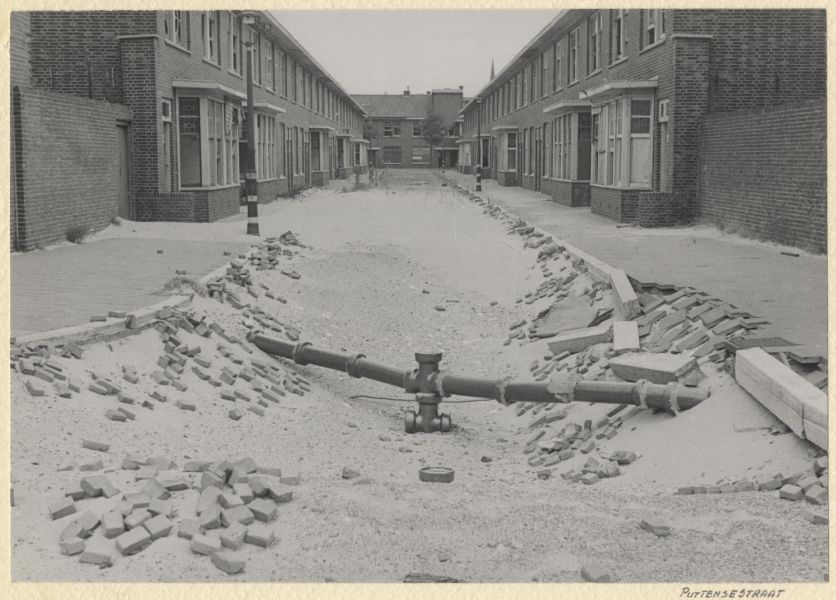From evacuation to return
The memorial on Tesselseplein consists of three sections. The stone on the left bears the inscription: evacuation 1943-1944. A tribute to the evacuation of Duindorp due to the construction of the Atlantic Wall.
A few shopkeepers, a doctor and a few other people with critical occupations remained in Scheveningen. No one at all remained in Duindorp. People who had ties to The Hague because of their jobs could look for accommodation in the area, others departed for the east of the country. The houses in Duindorp were stripped. In many streets, the paving stones were removed to use for building or the construction of roads elsewhere.
Internment camp for alleged traitors
The inscription on the centre stone reads: occupation. On the right: return after 1946. The end of the occupation in May 1945 did not mean that Duindorp residents could return to their homes. A tall barbed wire fence was erected around the area, which served as an internment camp for members of the National Socialist Movement in the Netherlands and other alleged traitors. The building at number 1 served as a guard room for the domestic armed forces, which guarded the camp. They imposed a strict regime and sometimes meted out punishments for no reason. The ill treatment and drawn-out legal proceedings led to an uprising amongst the prisoners in 1946. This was quelled in a heavy handed manner, but it did result in legal proceedings being speeded up. Those involved in minor cases were released during the course of 1946, the more serious cases were dealt with by special courts. Kamp Duindorp reduced in size slowly but surely and the first Duindorp residents returned from 1947. The last followed in 1953; only then was the reconstruction of houses that were demolished during the occupation completed.
 Herinneringsroute Atlantikwall Den Haag
Herinneringsroute Atlantikwall Den Haag


